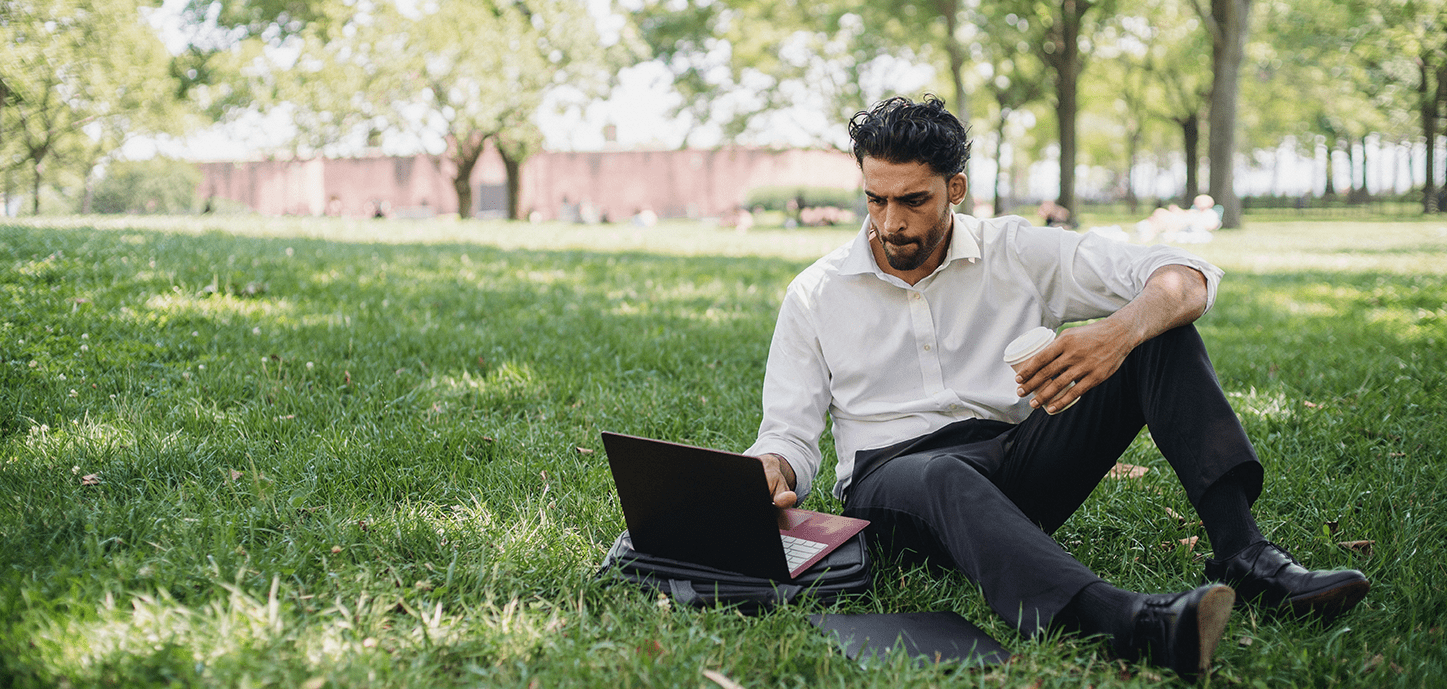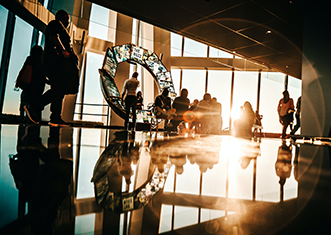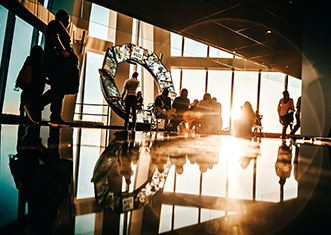The concept of a typical office has changed drastically in recent years. Cramped, squeezed-together cubicles have had to give way to social-first areas to increase employee collaboration. In addition, there's the latest trend of hybrid working, which, with all its benefits and positive acceptance by both companies and employees, has no intention of disappearing any time soon.
But this is just one example of how office design has evolved over the years to keep up with the trends of the times. Like the evolution of society, office space undergoes a natural evolution, driven by culture, economic growth, technology, and aesthetic changes.
But what were the roots of office design, and how has the office world changed since the first offices were built in ancient Rome?
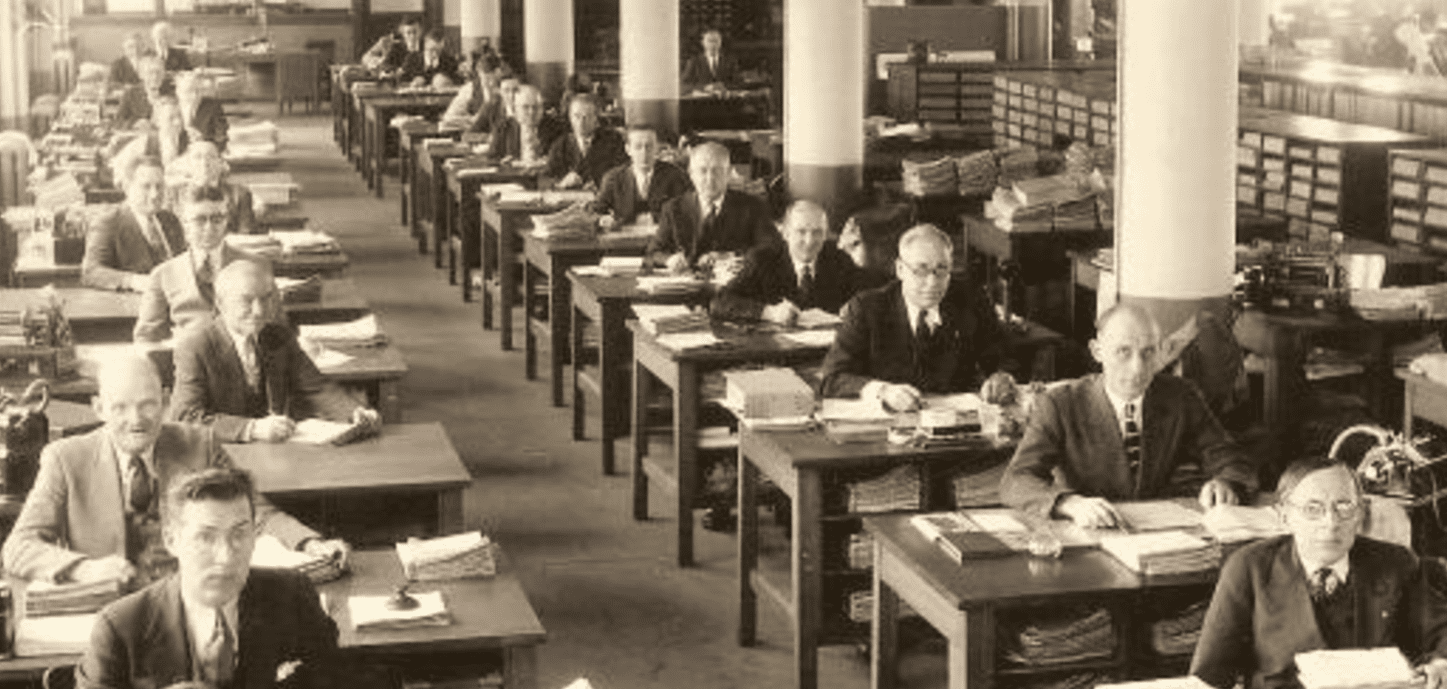
1) Taylorist Office (1900)
The goal of the Taylorist Office was to create a constant flow of work. It was primarily concerned with improving efficiency in companies that did not necessarily rely on manual labor. Thus, it attempted to mimic the factory assembly line of the time by delegating repetitive manual tasks to employees and executives of law firms, insurance companies, etc.
Executives kept their own offices, but staff desks were all brought together in one room, if possible, so managers could more easily observe their employees at work.
The development of the first commercially viable Taylorist Office is credited to Frank Lloyd Wright. Here, employees worked in a central open space in the middle of the building. Wholesome inscriptions on the walls were meant to illustrate the company's resemblance to a family or well-functioning machine. Wright also developed the first system furniture, i.e., desks with built-in cabinets and partitions, to allow employees to concentrate on their work. An office plan as a product of his time during the industrial revolution at the turn of the 20th century.
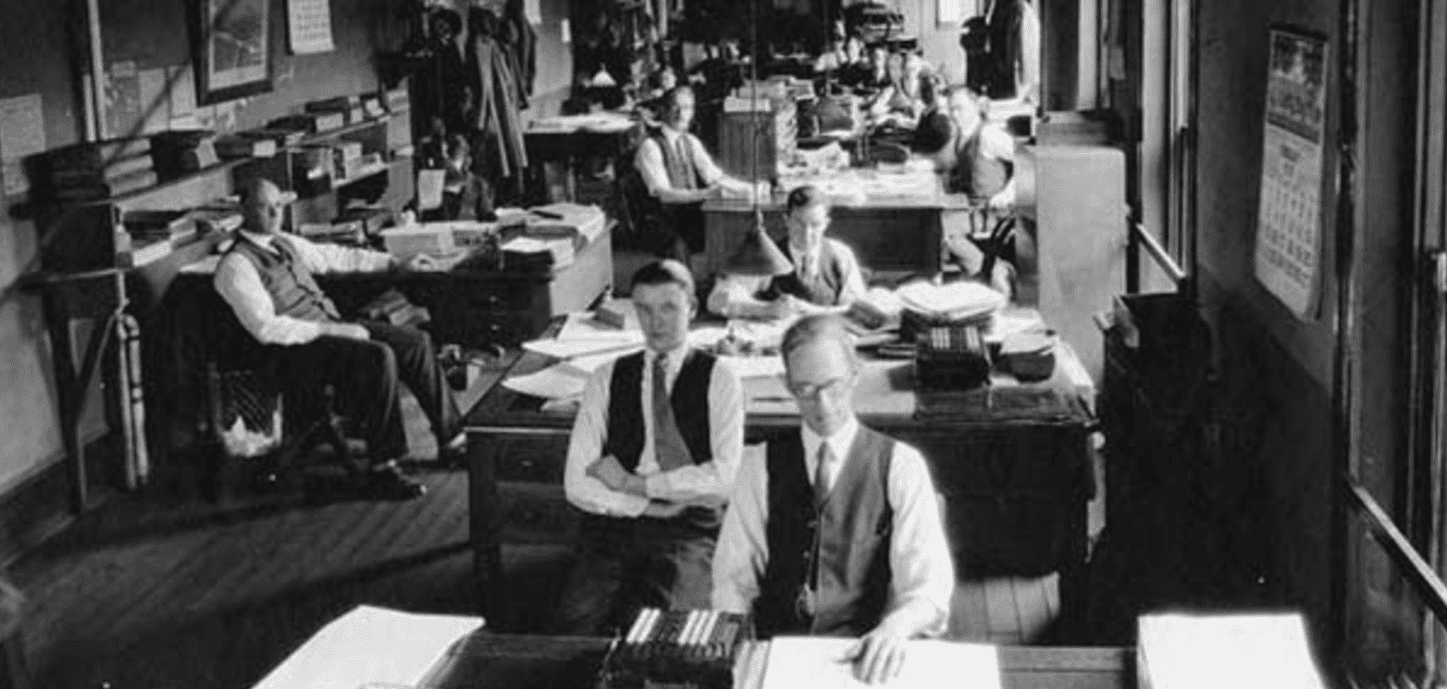
2) Social Democratic Office (1910-1930)
European countries saw a rise in miniature skyscrapers in the early 20th century, inspired by the skyscrapers in New York.
With architects such as Mies van der Rohe, office buildings with continuous bands of windows for natural light suddenly appeared. Le Corbusier's Glass Curtain Wall Project should also be mentioned here, which was intended to serve as an example of the organizational transparency of a modern democratic state. In these designs, the Taylorist open plan can be found, but in smaller integration by emphasizing natural light sources. Offices were still spacious and open, but now flooded with light.
3) The Streamlined Office (1930s)
With the beginning of the 1930s came the first aesthetically pleasing offices, coupled with efficiency-supporting spaces. Companies wanted to express their corporate image while making their employees' work more efficient.
Again, there was no great deviation from Taylorist principles. But in addition to a rigid hierarchy of work assignments, the streamlined office was developed along with architecturally modernist buildings. The office space became modern and warm, using radiant streamlined materials to compensate for the lack of interaction with the outside world. Taylorist design remained but upgraded with higher quality materials.
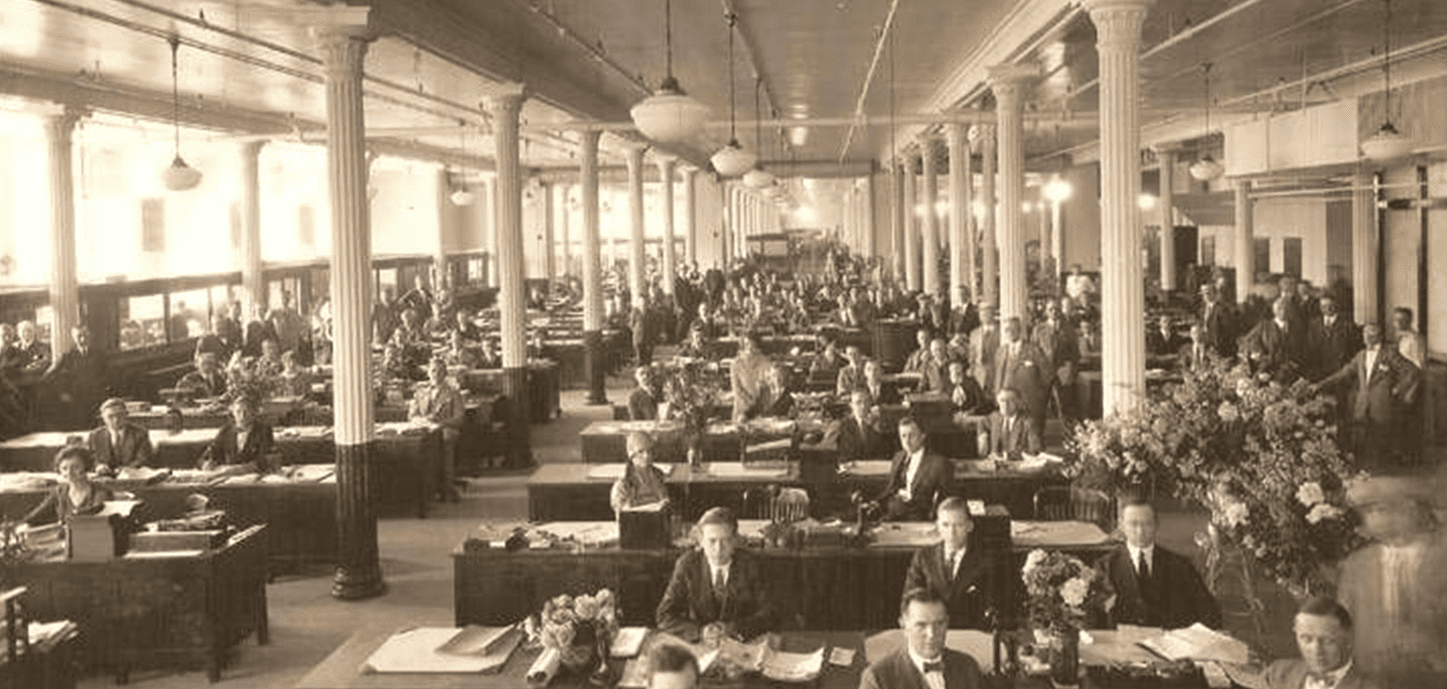
The 1950s brought other modern materials such as steel and glass to office construction. The new image of corporate business was characterized primarily by intelligent, clinical architecture of the international modern movement. Technological developments such as more advanced air conditioning and fluorescent lighting made the corporate office of the 1950s completely independent from the outside world and allowed for wider and more open floors where employees could be placed anywhere.
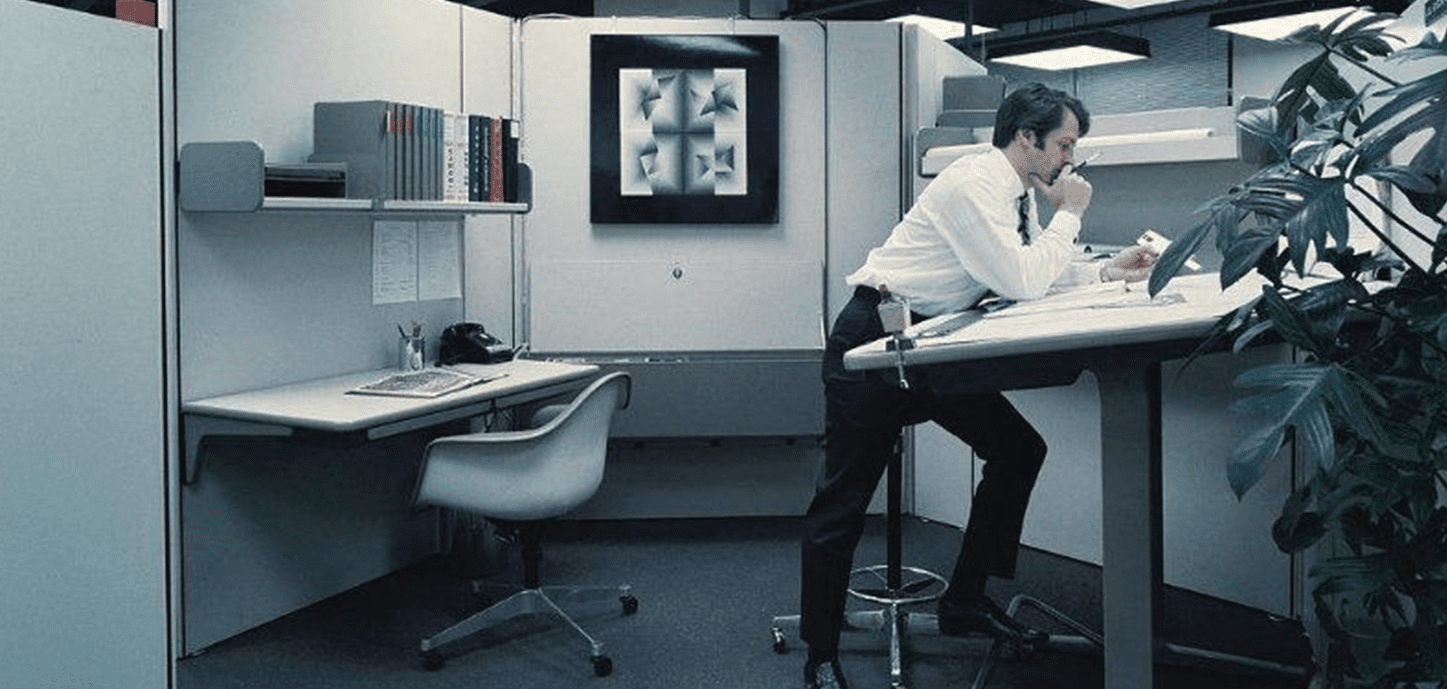
5) Burolandschaft (office landscape) (1950s)
The Burolandschaft (office landscape) arguably describes the first major reinvention of office space since Taylorism. A new concept of the open office attempted to break down the rigid structures of large bureaucratic organizations and design the spatial arrangement of the office according to the needs of the workers.
Completely turned away from the regimented banality of Taylorism and streamlined office spaces, the office landscape consisted of open plans of furniture found in unstructured divided spaces. Creativity entered the office design, with dividers and plants that were entirely oriented to the function of the workers.
The new office landscape design idea encouraged employees to sit and work together on multiple levels, improving collaboration and communication in the office environment.
6) The Action Office (1960s)
Only a few years later, the office landscape was undergoing a restructuring and the Action Office was born, which can be traced back to Herman Miller. It was characterized by modular furniture that was intended to allow freedom of movement and flexibility, tailored to the work to be done individually. At design level, it was argued that office work was mental work, and that this mental effort was also tied to a suitable working environment.
Originally, the Action Office was designed for smaller offices where employees worked in the same room with the same furniture. Because the furniture was custom-made, the design concept posed a financial and practical problem for larger companies. So, Action Office 2.0 was designed to be as flexible as its predecessor, but without the need to purchase expensive new furniture. The connection between employee productivity and their individually designed workspace was to be guaranteed. A three-sided vertical partition was to give the work area privacy without completely cutting off the employee from the outside world.
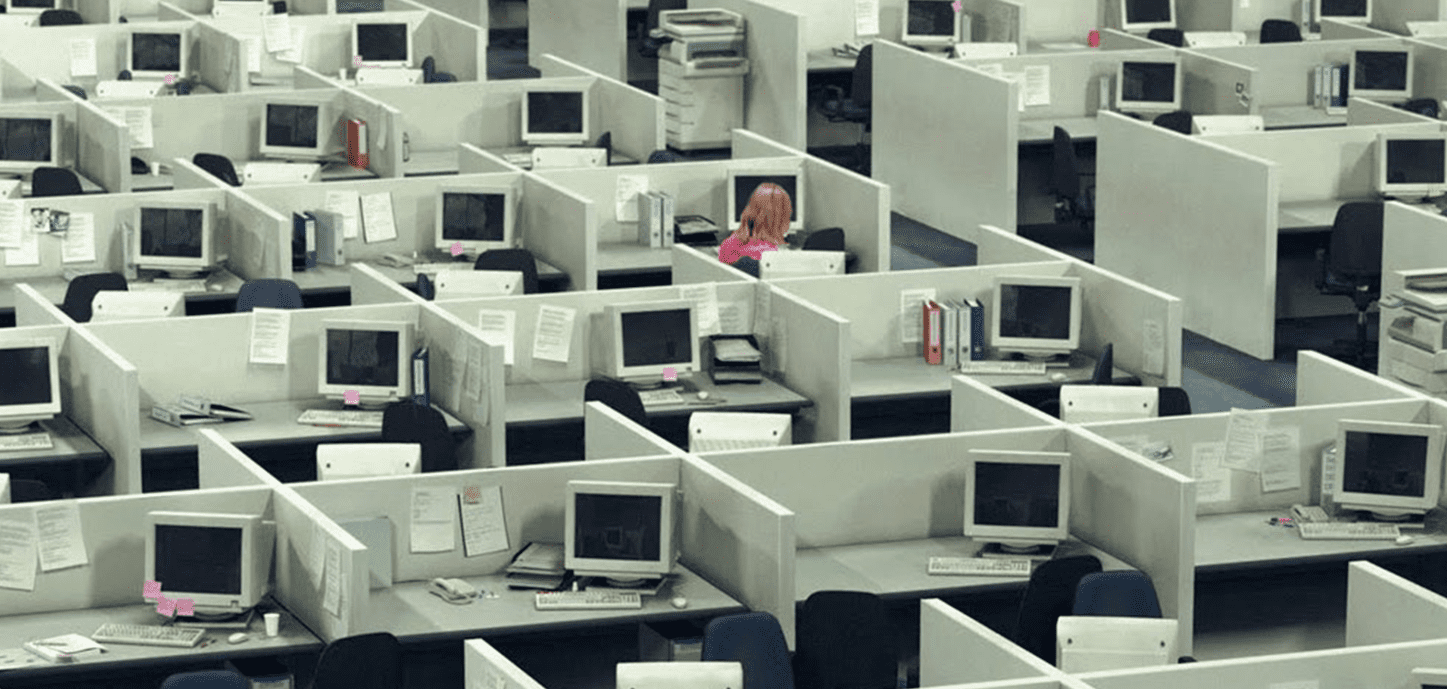
7) The Structuralist Office
By the end of the 1950s, the dominance of the modernist city came under criticism, so designers turned back to more traditional patterns. Dutch architect Herman Herzberger developed a kind of structuralist architecture that characterized the newly emerging office buildings. Employees were to feel part of a working community without being lost in the crowd. The new design described a building that housed several smaller buildings. Platforms separated by light wells allowed light to reach the center of the building. Employees were encouraged to customize and decorate their shared space, which companies actively used to foster a sense of family within the office. These basic elements of the Structuralist Office, which focused on employee well-being and communication, have survived into today's modern offices.
8) The Cubicle Farm (1980s)
The Cubicle Farm describes the dystopian version of the Action Office of the 1960s. Companies were suddenly more interested in profitability than in the well-being of their employees. The fast pace of the times was also accompanied by a rapid increase in middle management employees, who were too important for a place on the Taylorist work floor, but too insignificant for a corner office. So, the solution had to be a space that was both flexible and cost-effective. The cubicle office was born as a binary workspace where employees could work either at their desk or in a meeting room.
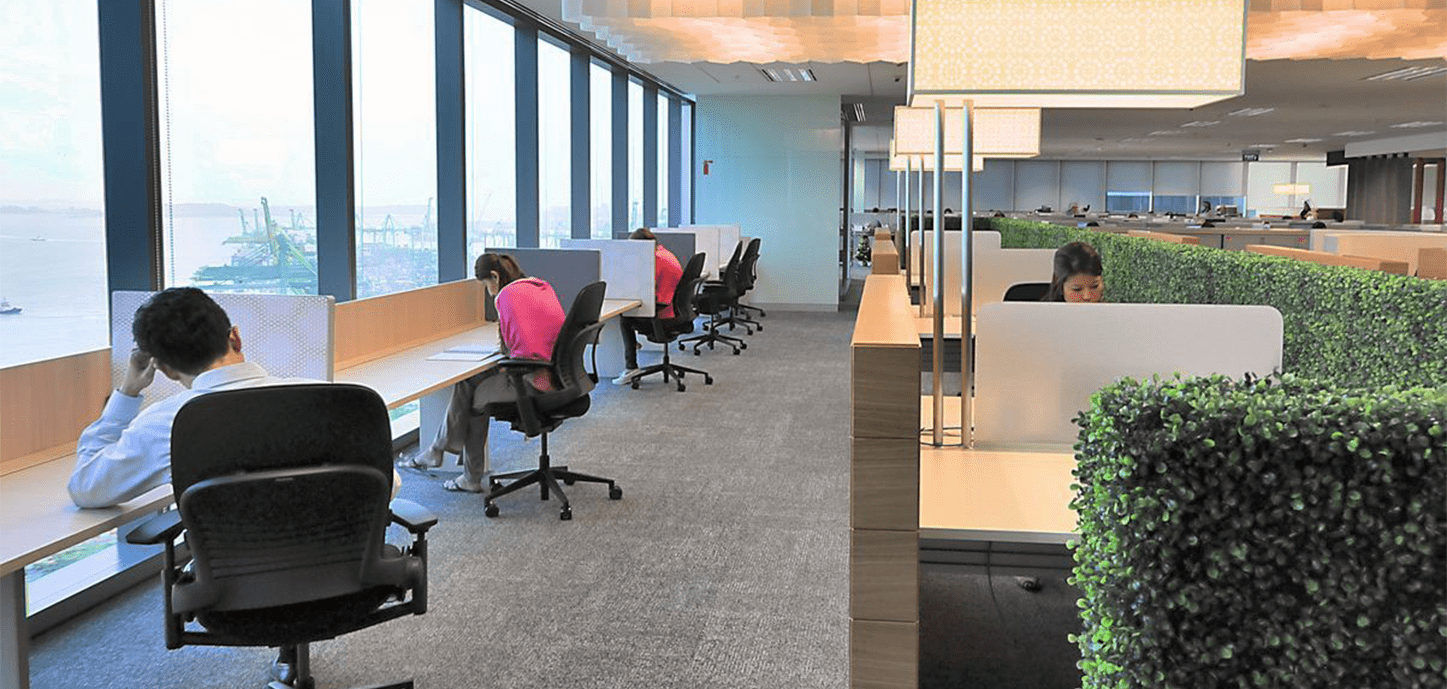
9) The Virtual Office (1990s)
With the newly widespread technology of the World Wide Web, offices could suddenly be moved away from the office desk to cafes and homes. This led to an innovative agile work structure within companies. Growing competition in increasingly globalized markets put pressure on many companies. The potential cost savings of telecommuting and outsourcing could not be ignored by companies. Thus, growing companies shifted their location from city centers to industrial parks.
10) The Casual Office (2000s)
The casual office emerged from companies in the creative industries and promoted highly personalized workspaces. The dress code in these offices, if any, was supposed to be reflected in the layout of the office. It consisted of alternative work environments, social areas, and art walls designed to stimulate employee creativity. Rising real estate prices resulted in a more efficient use of space that had more informal and flexible areas.
11) Activity-based working (2010s)
Employees can work productively in the same room even though they are all working on completely different projects? Probably not. But the solution isn't completely territorial offices, or gray cells, at least that's the argument of the new office design trend of the Activity-based Office. Here, employees have several logistically different workspaces to choose from to meet their individual needs.
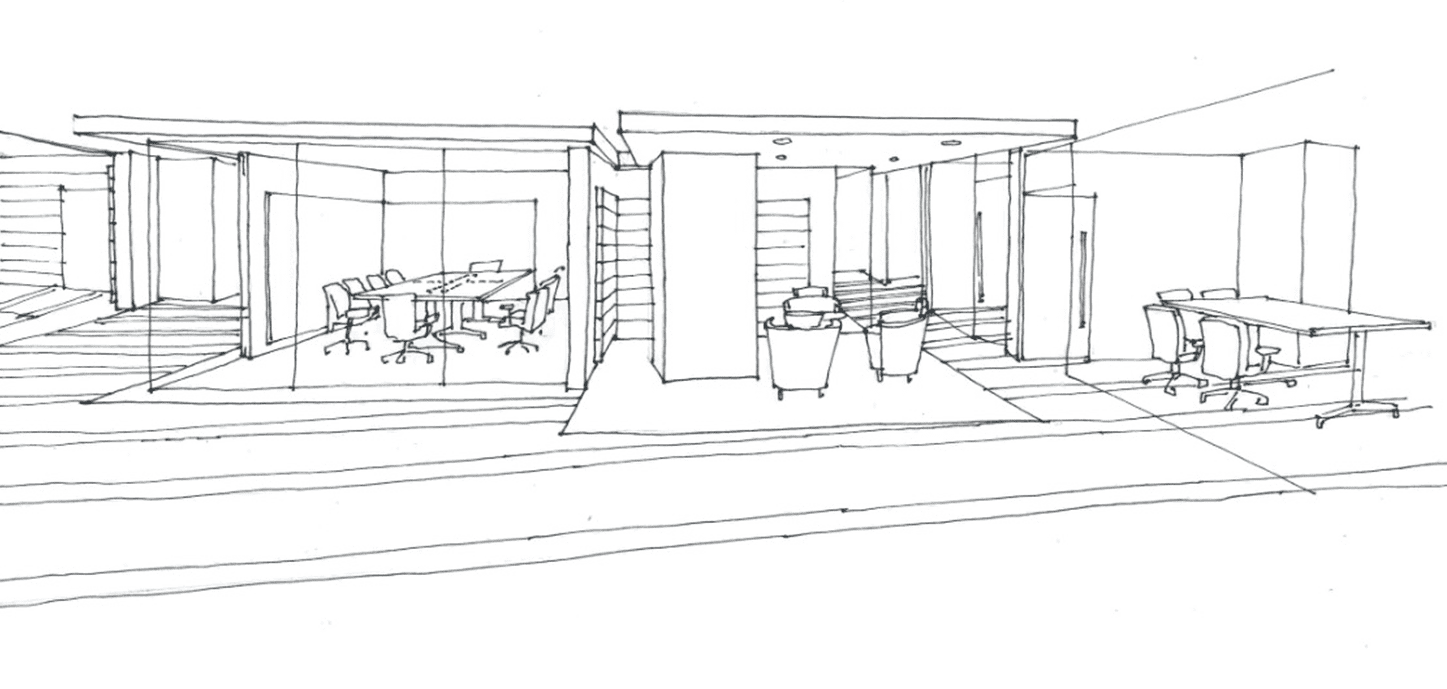
12) Workplace 3.0 (Today & the Future)
From Covid's forced experiment with the home office came Workplace 3.0, a workplace of the future that recognizes that the office needs a flexible work environment where people can work productively from home. Suddenly, the office is not only a place for collaboration, but also for interaction and social sharing. Each employee can decide individually whether they prefer to pursue their specific tasks at home or in another part of the workplace.
It is a workplace that reflects the company's environmental, social, and corporate governance approach. Above all, it is about well-being, sustainability, and technology. Well-being starts with each employee being able to decide for themselves where they can work best. Sustainability plays an important role not only in meeting the company's environmental commitments, but also in attracting the next generation of talent that is strongly focused on environmental issues. The third basic element of the new workplace is arguably one of the most important. Today's technology allows people to work from anywhere and have a seamless experience, both in the office and at home.
The workplace 3.0 is a place employees love to come to because it is firmly integrated into their lives. It enables maximum productivity and describes total organizational success.
The current focus on employee well-being, shows how much employees have become the focus of office design. Companies have realized that productivity starts with the producers.





